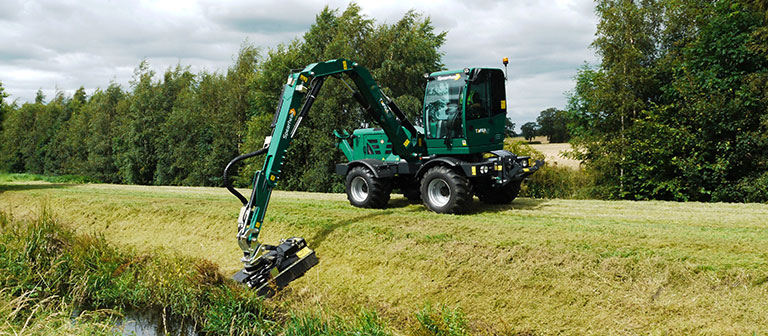Special Levy helps pay for essential water level management

The essential work of Internal Drainage Boards (IDBs) in managing water levels must continue to be funded through levies forming part of the council tax, but clearer guidance is needed to separate out these payments from councils’ own annual budgets, says the Association of Drainage Authorities (ADA) in a statement today.
Responding to calls from the District Councils’ Network (DCN) for these levies to be treated as a totally separate precept in the same way county council, fire and police precepts are, ADA has stated its desire to work with the DCLG and Defra to help deliver clearer guidance and to debunk the misconception that the levy is part of a council’s budget.
Agreeing with the recent statement from DCN for more clarity, ADA states that changes to council tax collection and restrictions on council tax increases has changed the nature of the relationship between councils and IDBs.
IDB levies have been collected through the local district or unitary authorities since the 1970s through rates (now council tax) to improve the efficiency of administration, having previously been paid directly by landowners and occupants living within an Internal Drainage District.
To make the process even more efficient, it was decided to collect the property as an average charge with the rates (council tax), so property owners only made one payment to the local authority. The local authorities pay the sum of individual property levies collected to the IDB as a single payment known as the Special Levy¹.
Today payment now forms part of the council tax across the local authority area rather than just the properties within the Internal Drainage District, but as ADA explains it is important to recognise that the council neither gains or loses any money from its budgets – it is simply the most efficient way of collecting rates when larger numbers of small levy payers are involved.
ADA also agrees with the DCN that Special Levy should be excluded from the capping criteria currently imposed on Councils. That doesn’t mean that there will be a free-for-all in raising Special Levy rates but it would allow councils, where they know that water level management plays a crucial role in the wellbeing of their local economies, to support their local Internal Drainage Boards to raise rates through a well-established democratic process where necessary.
Innes Thomson, ADA’s Chief Executive, added, “Internal Drainage Boards depend on Special Levy to help them provide a cost-effective, efficient, local service in managing water where it really matters to people and the environment. We need to publicise that service more and allow people to understand and support the work being done to reduce the risks of their lives being affected by flooding and drought”
Government is due to publish findings from the National Flood Resilience Review this summer and the Environment, Food & Rural Affairs Committee will also be completing its inquiry into Future Flood Prevention in the near future. ADA very much hopes that full recognition will be given to the valuable work of Internal Drainage Boards working in close co-operation with local councils, the Environment Agency and other water level managers in both reports.
¹Land Drainage Act 1991 Section 36
Ends
Archive
- April 2024
- March 2024
- January 2024
- December 2023
- November 2023
- October 2023
- September 2023
- August 2023
- July 2023
- June 2023
- May 2023
- April 2023
- March 2023
- February 2023
- January 2023
- December 2022
- September 2022
- August 2022
- July 2022
- June 2022
- May 2022
- April 2022
- March 2022
- February 2022
- January 2022
- December 2021
- November 2021
- September 2021
- July 2021
- May 2021
- March 2021
- February 2021
- January 2021
- December 2020
- November 2020
- October 2020
- September 2020
- August 2020
- July 2020
- May 2020
- April 2020
- March 2020
- February 2020
- January 2020
- December 2019
- November 2019
- October 2019
- September 2019
- August 2019
- July 2019
- June 2019
- May 2019
- April 2019
- March 2019
- February 2019
- January 2019
- December 2018
- November 2018
- October 2018
- September 2018
- August 2018
- July 2018
- June 2018
- May 2018
- April 2018
- March 2018
- February 2018
- January 2018
- December 2017
- November 2017
- October 2017
- September 2017
- August 2017
- July 2017
- June 2017
- May 2017
- April 2017
- March 2017
- February 2017
- January 2017
- October 2016
- September 2016
- August 2016
- July 2016
- June 2016
- May 2016
- April 2016
- March 2016
- January 2016
